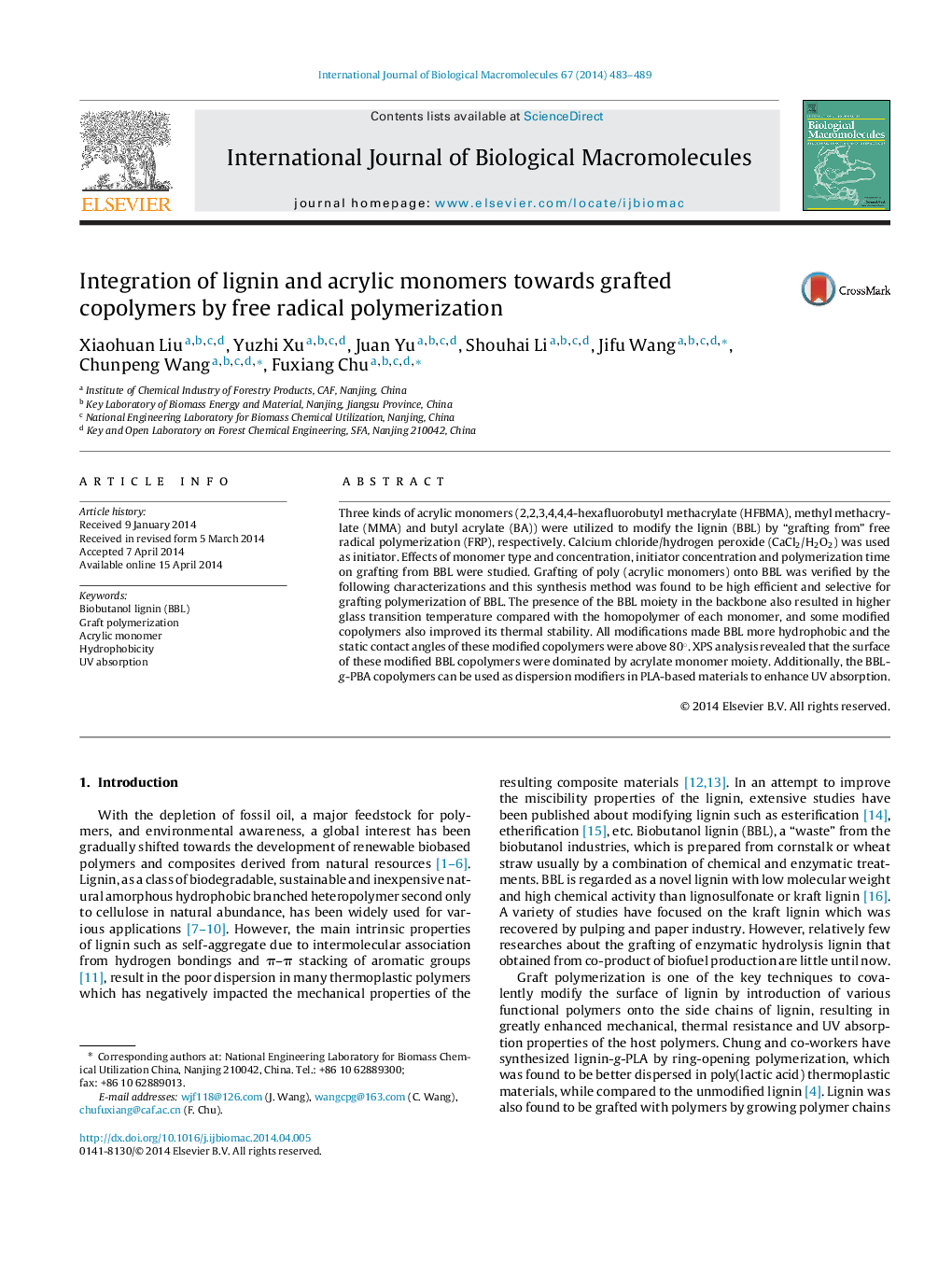| Article ID | Journal | Published Year | Pages | File Type |
|---|---|---|---|---|
| 8333234 | International Journal of Biological Macromolecules | 2014 | 7 Pages |
Abstract
Three kinds of acrylic monomers (2,2,3,4,4,4-hexafluorobutyl methacrylate (HFBMA), methyl methacrylate (MMA) and butyl acrylate (BA)) were utilized to modify the lignin (BBL) by “grafting from” free radical polymerization (FRP), respectively. Calcium chloride/hydrogen peroxide (CaCl2/H2O2) was used as initiator. Effects of monomer type and concentration, initiator concentration and polymerization time on grafting from BBL were studied. Grafting of poly (acrylic monomers) onto BBL was verified by the following characterizations and this synthesis method was found to be high efficient and selective for grafting polymerization of BBL. The presence of the BBL moiety in the backbone also resulted in higher glass transition temperature compared with the homopolymer of each monomer, and some modified copolymers also improved its thermal stability. All modifications made BBL more hydrophobic and the static contact angles of these modified copolymers were above 80°. XPS analysis revealed that the surface of these modified BBL copolymers were dominated by acrylate monomer moiety. Additionally, the BBL-g-PBA copolymers can be used as dispersion modifiers in PLA-based materials to enhance UV absorption.
Related Topics
Life Sciences
Biochemistry, Genetics and Molecular Biology
Biochemistry
Authors
Xiaohuan Liu, Yuzhi Xu, Juan Yu, Shouhai Li, Jifu Wang, Chunpeng Wang, Fuxiang Chu,
